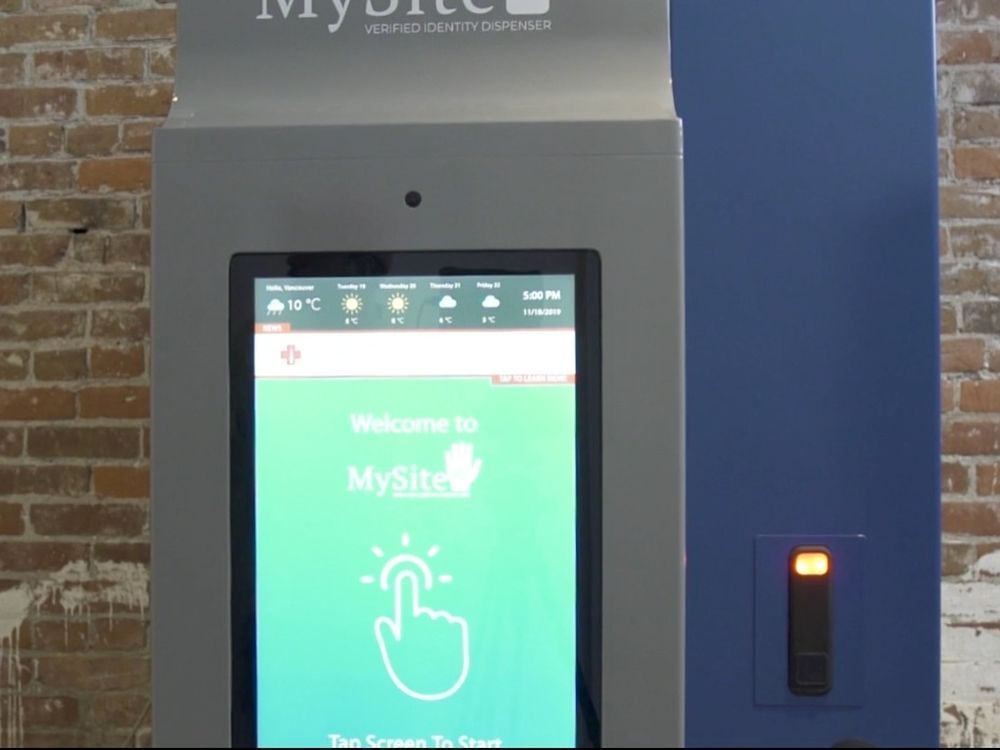Biometric opioid vending machine unveiled in Vancouver

Credit to Author: Tiffany Crawford| Date: Sat, 18 Jan 2020 23:52:59 +0000
Vancouver is now home to the first biometric opioid vending machine, the latest harm reduction strategy in the ongoing opioid crisis.
The vending machine, located in the city’s Downtown Eastside at 60 Hastings Street next to an overdose prevention site, was launched by the MySafe Project, which is led by Dr. Mark Tyndall, a professor of medicine at UBC’s School of Population and Public Health. Tyndall showed how it works in a video posted on social media this week.
The 800-pound machine works kind of like an ATM to dispense a medicinal alternative to heroin called hydromorphone to people who are registered opioid users. It scans the vein pattern in a person’s palm, and then dispenses a small box with a safe dose of hydromorphone. MySafe is also developing an app so people can track their drug use.
“I believe if you allow people to stabilize their routine a little bit more by having a secure safe place where they can get their drugs, and cut into the other activities that they might have to do to get their drugs, then there will be much more time for connection,” said Tyndall, in the video.
On Saturday, Tyndall said they now have eight people using the machine, up from five, who started the trial project about a month ago.
“So far it has been great for them and it is really helping them stabilize and not hustle for drugs like they were a month ago. We wanted to demonstrate the technology works, and it is,” he said.
The machine is available from 8 a.m. to 8 p.m., but Tyndall said it is very secure and he believes it would be beneficial to make it available for 24 hours so people could access it at night.
Tyndall, who has been working with the Downtown Eastside community for 30 years, said he chose people to participate in the program that he knew were at high risk for a fentanyl overdose.
“I was afraid that I would wake up in the morning and hear they had overdosed. They are people with a history of an overdose and tested for fentanyl in their urine, so they are high risk.”
“The biggest challenge we have had is people using drugs in a room by themselves. So with this they can continue using alone without the risk of overdose. They can come, get their medication, and then take it with them.”
Tyndall said giving people a regulated and safer drug supply stops overdoses and gives people their lives back.
This is a screen shot from a video posted on social media by UBC professor of medicine Dr. Mark Tyndall showing the biometric opioid vending machine that is now in use in Vancouver’s Downtown Eastside.
“There are two points to a safe supply. One is the obvious thing that in one hand you have deadly fentanyl and the other hand you have a pharmaceutical drug with a known dosage, the person who takes the known dosage will not overdose,” he said.
The eight-milligram hydromorphone pills cost about 35 cents each and focus groups with drug users have suggested most people would need about 10 to 16 pills a day, according to Tyndall.
He said hydromorphone is typically crushed and injected by people who may have previously used OxyContin, before that drug was made more difficult to tamper with following multiple fatal overdoses.
More than 5,000 people have died in the overdose crisis in B.C. since 2016.
ticrawford@postmedia.com
-With a file from The Canadian Press
M Y S A F E on Vimeo This video shows how MySafe works and why it is necessary. #MySafeProject #SafeSupplyNow #harmreduction https://t.co/0W9q8izgrR